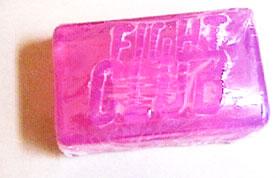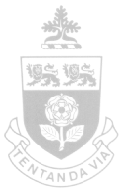I AM JACK'S NARRATIVE STRUCTURE
Fight Club is a movie that is rich in narrative, incorporating various images, visual effects, metaphors, sound effects and symbols as well as combining several thematic elements that play off of societal norms and values. When done effectively, these elements combine to help 'mesmerize' the audience into a state where they willingly suspend their beliefs about plausibility and possibility and allow the viewers to "… become emotionally affected by these images, sounds, and music, and also often identify with the characters in films and learn something about themselves and about life in the process." (Berger, 147)
THEMATICALLY
Plotlines in modern stories are built upon
the values and norms of a society or culture (Wright
in Berger, 154). The 'bad guys' can be easily identified by
their actions that will most usually be actions that the society
at large frowns upon (ex. murder) or recognizes as attributes
that they have deemed 'evil', while the 'good guys' reflect societal
norms and values that society respects and recognizes as 'good'
(ex. rescuing someone in trouble). A.A. Berger in his chapter
entitled Film Narratives discusses Will Wrights study of popular
western films Sixguns and Society (1975) and the four main plot
lines that were used in the Western movie genre (Berger,
153). Movies usually contain a mixture of these different
plots … but notice how these 'Western' plots are also represented
in the modern day movie Fight Club.
| Western Plots | Description | Represented in Fight Club |
| Classical | To separate yourself from everybody else and use your strength as an individual to win them over | Tyler/Jack separated himself from society by refusing to become a mindless consumer. Started Fight Club on his own and soon had 'franchises' the world over. |
| Vengeance | To be respected and loved one must struggle alone against your enemies, but make an effort to return to the 'softer' values of marriage and humility | Jack struggled alone against his ideal self, Tyler. Fighting to gain back control, and rein in Tyler throughout the movie, Jack eventually returns to Marla and signifies that he is ready to begin a relationship. |
| Transition | By standing firmly against the intolerance of society, thus making oneself an outcast, one can earn love and companionship. | 'Standing firmly' against societies distaste of violence, Jack's fighting separated him from the everyday person and in the end served as a bond between himself and Fight Club members everywhere. |
| Professional | Companionship and respect are to be earned by forsaking individual goals and joining an elite group of 'professionals'. Pledging loyalty only to the team. | The members of Fight Club gave up individual identity and pursuit of goals imparted upon them by society in order to join Fight Club, and then Project Mayhem. Each earning the respect and companionship of one another. |
